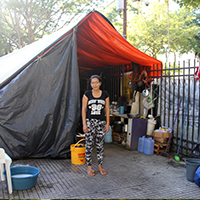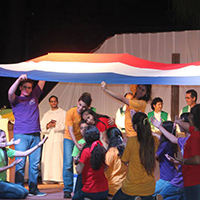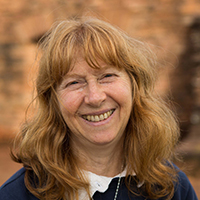Margaret Hebblethwaite from Asuncion, Paraguay
The great student revolution happened in 1968. Or did it? If you are Paraguayan, the great student revolution happened in 2016. Asuncion’s top college Universidad Nacional was brought to a standstill for months last year by strikes and road blocks, as students demanded the sacking of corrupt officials who were bleeding the university of much-needed funds.
In a recent lecture at London’s Canning House, the new Paraguayan Minister of Education, Enrique Riera, explained how he was brought in to calm the Youth Revolution, after 150 secondary schools had been occupied for ten days. Pupils of the Cristo Rey school (Christ the King), for example, protested under the declaration that they “see the dreams and hopes of our young people being mortgaged away”. The mismanagement and corruption at the heart of education, they claimed, has systematically left the Paraguayan school system “among the lowest in the world”. As someone who works for a Paraguayan educational charity, I have to agree.
Riera was a lawyer-politician with no previous experience of education, which might seem a drawback, but given the way heads were stuck in the sand in the Ministry it was probably a good thing. He said his approach to the Youth Revolution was twofold: one, that the young people were right; and two, that what was happening was a “tsunami”.
At first, the student leaders threw water at him, and when he got to his first meeting with them they berated him for arriving 17 minutes late. “I’m sorry, it won’t happen again,” he replied humbly, as he began the task of winning their trust and introducing reforms.
Not all demonstrations in Paraguay are so successful. Land occupations by peasants are tragically unsuccessful, even when the land has been given up for land reform. Instead, corrupt officials allow it to be taken over illegally for plantations of genetically-modified soya. Driving towards the east of the country my eyes have boggled at the way soya plantations form one continuous carpet for hour upon hour, horizon to horizon, punctuated only by occasional notices sticking up saying “Round Up” (the notorious herbicide). There is big money in soya, and money is what controls the courts in Paraguay.
The most recent big case was at Guahory, where 200 families were forcibly driven out of their homes with rubber bullets and tear gas, to have the territory handed over to rich soya agriculturists, who had no right to it.

This prompted the Jesuit priest, Oscar Martin, to link the events to the massacre of the innocents: “These days, our government is not that of Herod but of [President] Horacio Cartes; his allegiance is not to the Roman Empire, but to the interests of drug traffickers, to the owners of the land and to the transnational companies; he does not use the repression of the Roman army, but of the Grupo Especial de Operaciones, the police and the riot police with their rubber bullets, tear gas, garrotes and prison. The actors have changed, but the injustice and repression against the poor is still the same.”
Guahory had echoes of the terrible case of Curuguaty, when innocent campesinos in a land occupation were shot dead and others falsely convicted of conspiracy to murder and sent to prison for up to 35 years (http://www.thetablet.co.uk/news/5867/0/-scapegoats-convicted-in-murder-trial).
There is a permanent Tent of Resistance in front of the Palacio de Justicia (or “Palacio de Injusticia” as they call it), where the wives and children of these prisoners still live, chaining themselves together every morning as a protest as people arrive at the Palacio. On Sunday evenings the human rights campaigner, Pa’i Oliva SJ, celebrates Mass there with a group of campaigners in solidarity with the struggle.

Such corruption and injustice is depressing, but not all is gloom. In fact, Paraguay has been classed by Gallup - for the last five years in a row - as the happiest country in the world. Will it make it again, when the next results are published on 20 March, the International Day of Happiness? The poll is based on a survey of people’s positive feelings. Did they smile or laugh, enjoy themselves, do something interesting, feel well rested and respected?
You will be convinced of Paraguayan happiness if you listen to the songs of the Paraguayan New Guarani Mass (“Gira lanzamiento de la Misa Guaraní Pyahu” on Youtube). Sung and danced by schoolchildren, the new Mass in the indigenous language was written to celebrate the 200th anniversary of the Restoration of the Jesuits (1814-2014). It weaves together rhythms of pop, rock, latino, reggae and blues, and opens with the joyous “Come let’s sing, come let’s dance, come let’s pray: we’re all happy together.” It will have your feet moving before you can help yourself.




 Loading ...
Loading ...
What do you think?
You can post as a subscriber user ...
User comments (0)